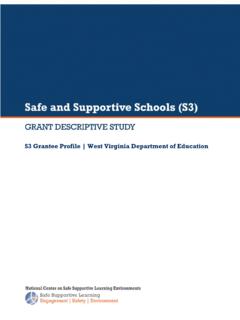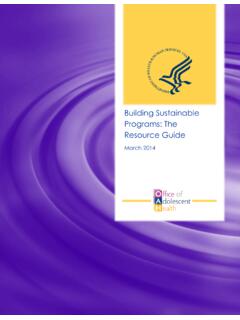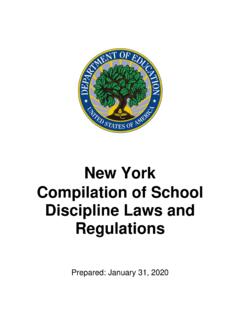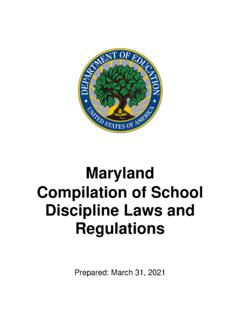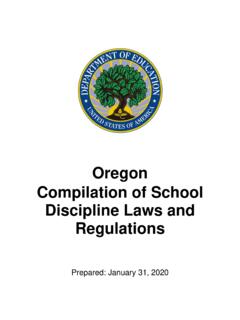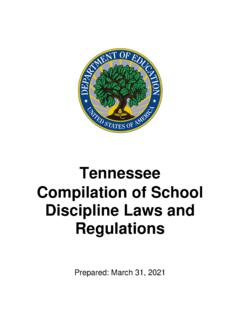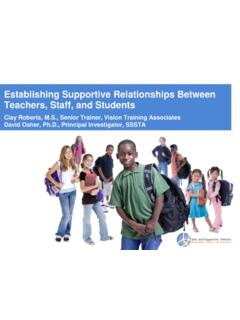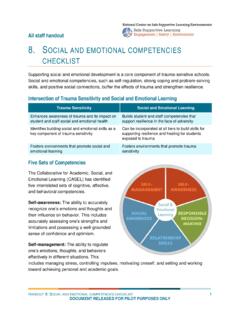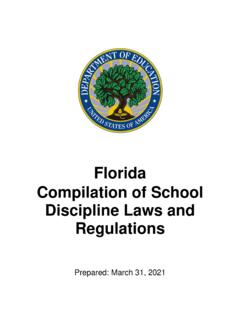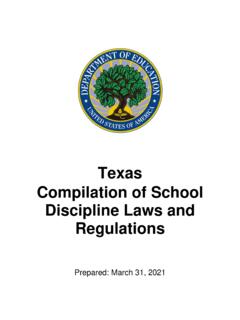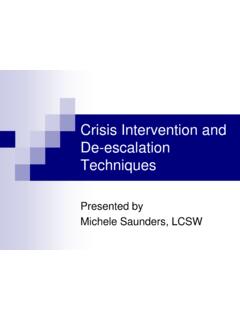Transcription of 2. Secondary Traumatic Stress and Self-Care Packet - ed
1 Handout 2: Secondary Traumatic Stress and Self-Care Packet 1 All staff handout 2. Secondary Traumatic Stress and Self-Care Packet Educators, counselors, and other support staff who work with students exposed to trauma are at risk of being indirectly traumatized as a result of hearing about their students experiences and witnessing the negative effects. In the first section of this Packet , learn about Secondary Traumatic Stress and related conditions; in the second section, use the tools and strategies provided to help you create individual and schoolwide plans to promote staff Self-Care and resilience.
2 Secondary Traumatic Stress and Related Conditions Secondary Traumatic Stress (STS) is the emotional distress that results when an individual hears about the Traumatic experiences of another individual. Distress may result from hearing someone s trauma stories, seeing high levels of distress in the aftermath of a Traumatic event, needing to retell a student s story, and/or seeing photos or images related to the trauma. Common symptoms of STS include the following: Increased anxiety and concern about safety Intrusive, negative thoughts and images related to their students Traumatic stories Fatigue and physical complaints Feeling numb or detached from students Feeling powerless or hopeless about students and the work Diminished concentration and difficulty with decision making Desire to physically or emotionally withdraw from people or situations that trigger difficult thoughts and emotions Several other terms capture elements of STS, but with some differences.
3 Burnout is characterized by emotional exhaustion, depersonalization, and a sense of reduced personal accomplishment. Although burnout also is work related, burnout develops as a result of general occupational Stress ; the term is not used specifically to describe the effects of indirect trauma exposure. Compassion fatigue is a less stigmatizing way to describe STS and is sometimes used interchangeably with the term STS. Handout 2: Secondary Traumatic Stress and Self-Care Packet 2 Vicarious trauma refers to internal changes in teachers and staff members who engage empathetically with students affected by trauma.
4 It is a theoretical term describes the cumulative effects of Secondary exposure to trauma. Compassion satisfaction describes the positive feelings derived from competent performance as professional working with trauma survivors. It is characterized by positive relationships with colleagues and the conviction that one s efforts contribute in a meaningful way to students, their families, and the community. Risk Factors for STS and Related Conditions Any professional who works directly with people exposed to trauma and hears them recount their Traumatic experiences is at risk of STS. Additional risk factors associated with STS and related conditions for professionals include the following: Prior trauma exposure Female gender Inexperience in the field Dose of exposure Type of work Young age Handout 2: Secondary Traumatic Stress and Self-Care Packet 3 Warning Signs of STS and Vicarious Trauma Professionals affected by Secondary Traumatic Stress and related conditions such as vicarious trauma experience a variety of symptoms that may affect all aspects of daily life, including negative changes in beliefs about themselves, others, and their work.
5 Warning Signs of STS and Vicarious Trauma Hypervigilance Excessive alertness for potential threats or dangers at and outside of work. Always being on and on the lookout Poor Boundaries Lacking a balanced sense of your role so that you take on too much, step in and try to control events, have difficulty leaving work at work, or take the work too personally Avoidance Coping with Stress by shutting down and disconnecting Inability to Empathize/Numbing Unable to remain emotionally connected to the work Addictions Attaching to distractions to check out from work, personal life, or both Chronic Exhaustion/ Physical Ailments Experiencing physical, emotional.
6 And spiritual fatigue or inexplicable aches and pains exceeding what you expect for an ordinary busy day or week Minimizing Trivializing a current experience by comparing it with another situation that we regard as more severe Anger and Cynicism Using cynicism or anger to cope other intense feelings that we may not understand or know how to manage feelings of Professional Inadequacy Becoming increasingly unsure of yourself professionally, second-guessing yourself, feeling insecure about tasks that you once felt confident to perform Handout 2: Secondary Traumatic Stress and Self-Care Packet 4 Tools for Staff Self-Care and Resilience A number of individual and system-level strategies effectively promote staff Self-Care and resilience.
7 This section includes the following tools for supporting individual and schoolwide strategies for addressing and minimizing the effects of STS and related conditions: Shared Strategies for Staff Self-Care and Resilience suggests individual and schoolwide strategies to support a culture of staff wellness. Staff Self-Care Plan begins with a personal inventory of warning signs, proceeds to an assessment of Self-Care practices, and concludes with making a commitment to specific practices. School Self-Care Plan offers a process similar to developing an individual Self-Care plan but for the entire school.
8 Shared Strategies for Staff Self-Care and Resilience Creating a healthy work environment is a shared process that includes individual and school-based strategies. Explore these ideas for what you can do and what your school can do to foster wellness for all. What You Can Do What Your School Can Do Increase your knowledge and awareness of the effects of trauma and STS. Educate staff about the effects of trauma, STS, and related conditions and provide regular opportunities for staff to address potential issues related to STS. Assess your current level of burnout, STS, and vicarious trauma. Identify and monitor STS and related conditions among staff.
9 Here are two tools that may be helpful: Compassion fatigue self-test Professional quality of life scale, ProQOL 5 stay connected to other people and groups that are supportive and nourishing. Encourage and develop formal strategies for peer support and mentorship. Identify and incorporate specific Self-Care strategies for promoting resilience and maintaining a healthy work life balance ( , exercise, good nutrition, supportive networks). Create a culture that fosters staff resilience that includes: fair leave policies, adequate benefits, a physically safe and secure working environment, sufficient supervision, support and resources to do the work, and processes for shared decision making.
10 Handout 2: Secondary Traumatic Stress and Self-Care Packet 5 Staff Self-Care Plan Use this worksheet to create your own Self-Care plan. You do not need to share your answers with anyone this is simply for self-reflection. Check back regularly to see how things are going and assess whether you need to make any adjustments to your plan. 1. Recognize the warning signs. Becoming aware of the effects your work has on you is essential to helping you take care of yourself. Think about the warning signs of STS and related conditions and consider how they may be present in your daily life. Even if you are not regularly exposed to student trauma, you may be struggling with issues of burnout or remnants of your own personal trauma experience.
